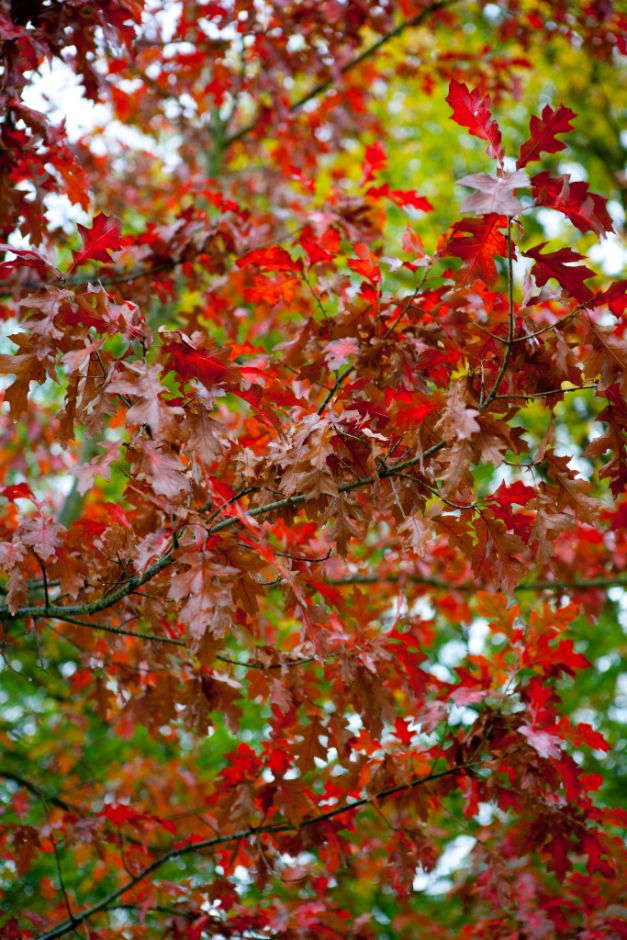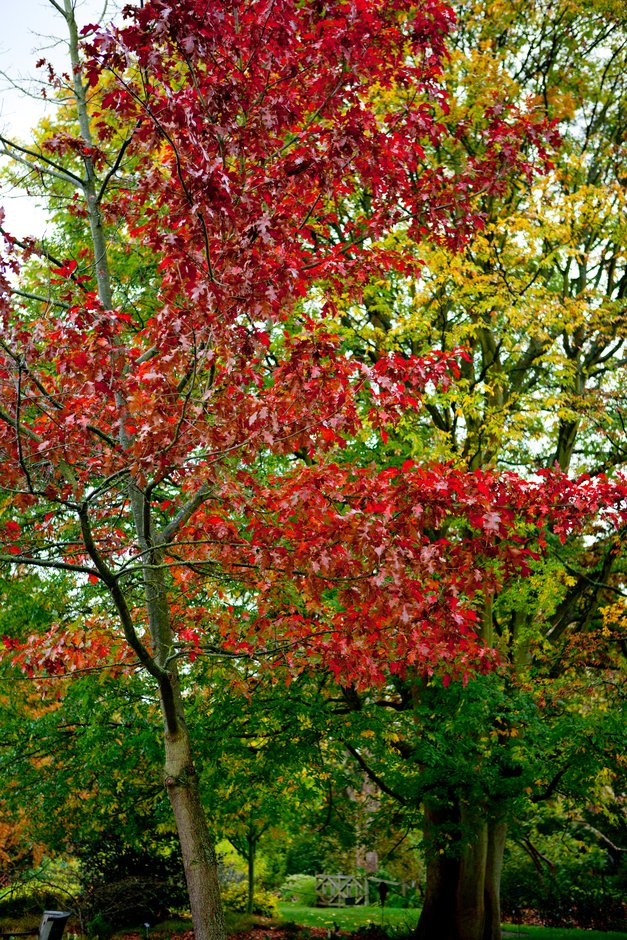Quercus shumardii
shumard oak
A small to medium-sized, deciduous tree to 18m tall, initially pyramidal in habit but spreading to form a broad, open crown with age. Deeply-cut, glossy green leaves up to 20cm long with 7-9 lobes have conspicuous tufts of hairs in the vein axils on the undersides; leaves turn red or golden-brown in the autumn. Insignificant greenish flowers are followed in autumn by acorns, usually solitary and up to 2.5cm long
Size
Ultimate height
Higher than 12 metresTime to ultimate height
20–50 yearsUltimate spread
Wider than 8 metresGrowing conditions
Moisture
Moist but well–drained, Well–drainedpH
Acid, Alkaline, NeutralColour & scent
| Stem | Flower | Foliage | Fruit | |
| Spring | Green | Green | ||
|---|---|---|---|---|
| Summer | Green | |||
| Autumn | Brown Gold Red | Brown | ||
| Winter |
Position
- Full sun
Aspect
North–facing or West–facing or South–facing or East–facing
Exposure
Exposed or Sheltered Hardiness
H6Botanical details
- Family
- Fagaceae
- Native to GB / Ireland
- No
- Foliage
- Deciduous
- Habit
- Columnar upright
- Potentially harmful
- Pets (dogs): Harmful if eaten - for further information and contact numbers regarding pets, see the HTA guide to potentially harmful plants
- Genus
Quercus can be deciduous or evergreen trees or shrubs, with entire, lobed or toothed leaves; flowers inconspicuous, followed by characteristic acorns; sometimes good autumn colour
- Name status
Correct
- Plant range
- SE US
How to grow
Cultivation
Grow in deep, fertile, well-drained soil in full sun
Propagation
Propagate by seed or by grafting in mid-autumn or late winter
Suggested planting locations and garden types
- Low Maintenance
Pruning
Pests
May be susceptible to oak processionary moth, aphids, caterpillars, leaf-mining moths and oak gall wasps
Diseases
May be susceptible to powdery mildews and honey fungus
Get involved
The Royal Horticultural Society is the UK’s leading gardening charity. We aim to enrich everyone’s life through plants, and make the UK a greener and more beautiful place.

